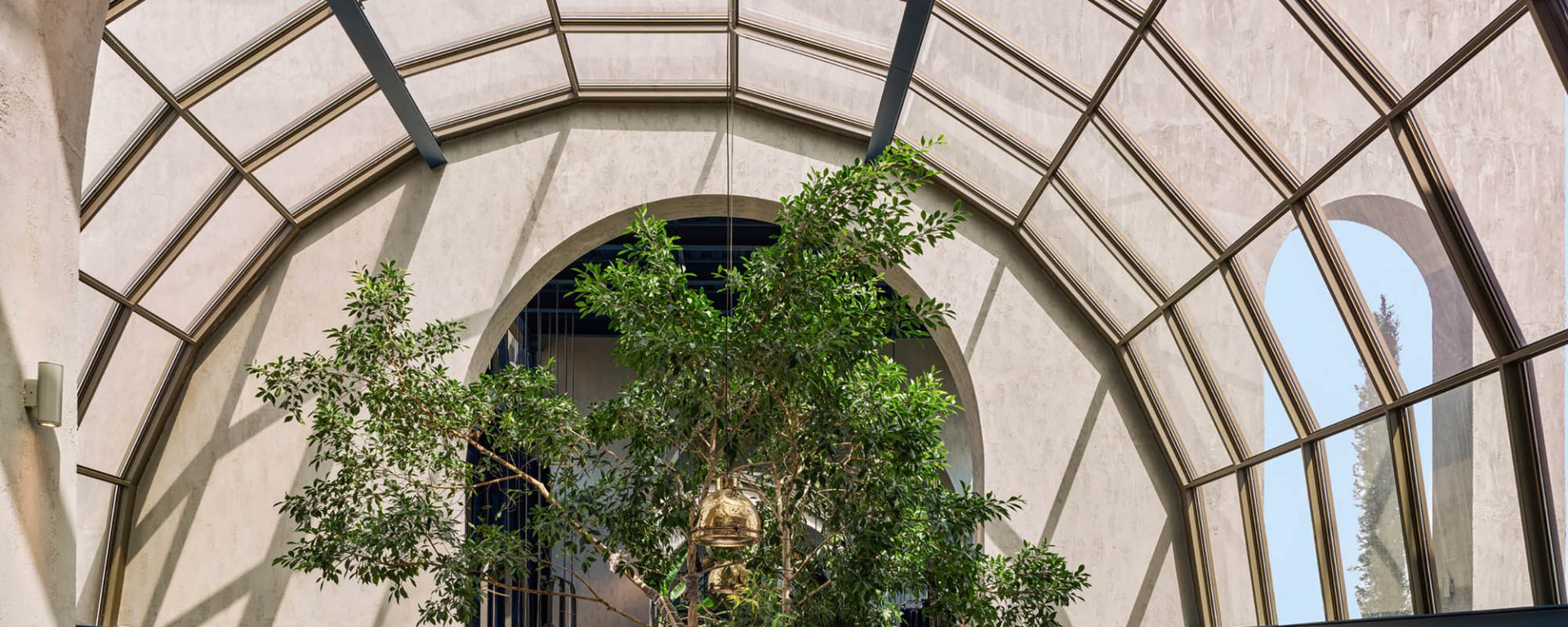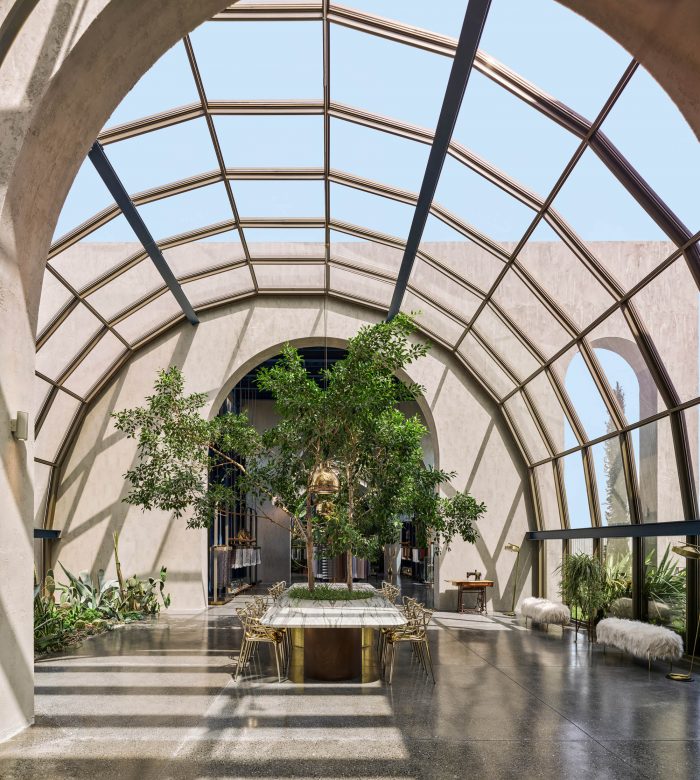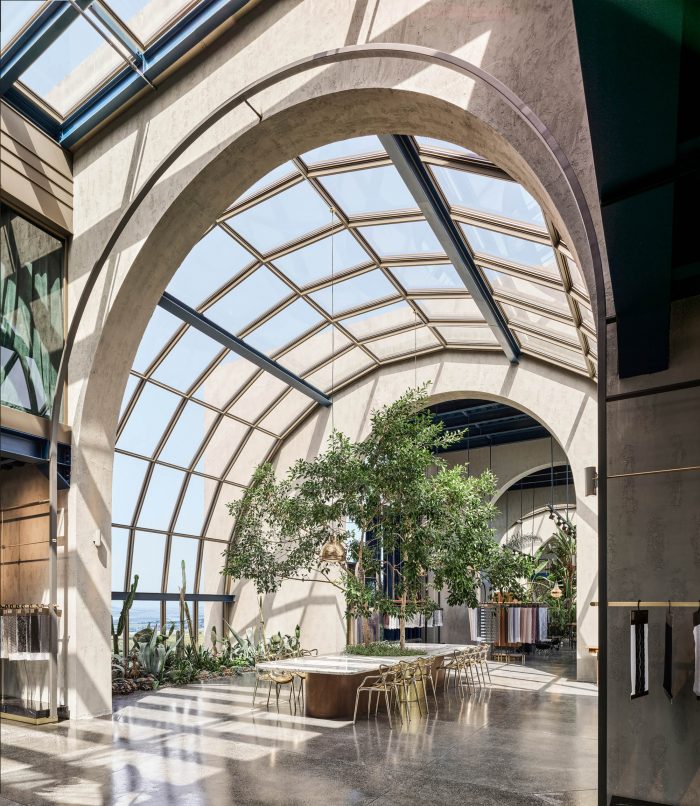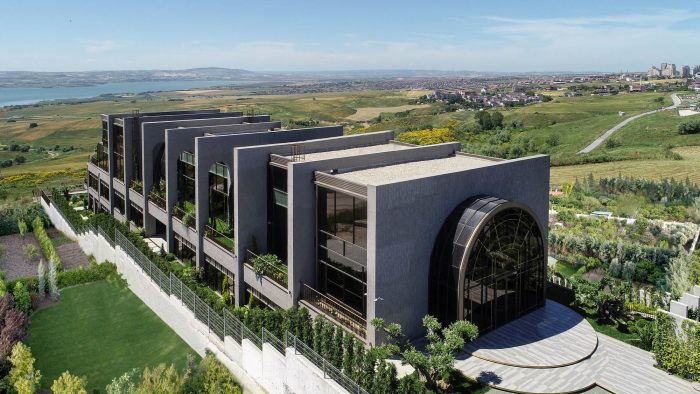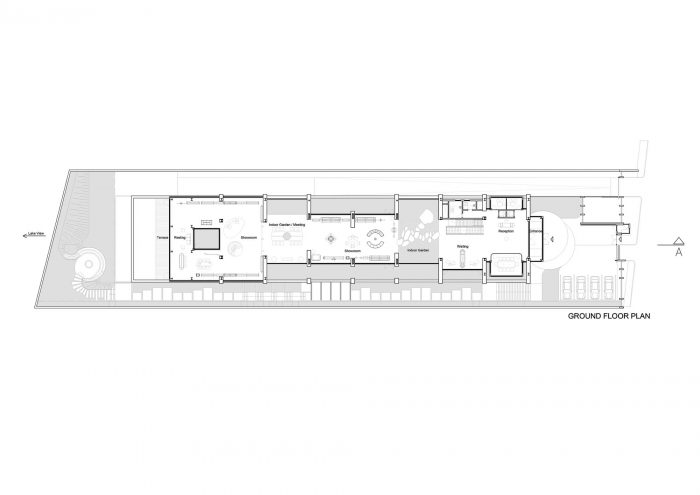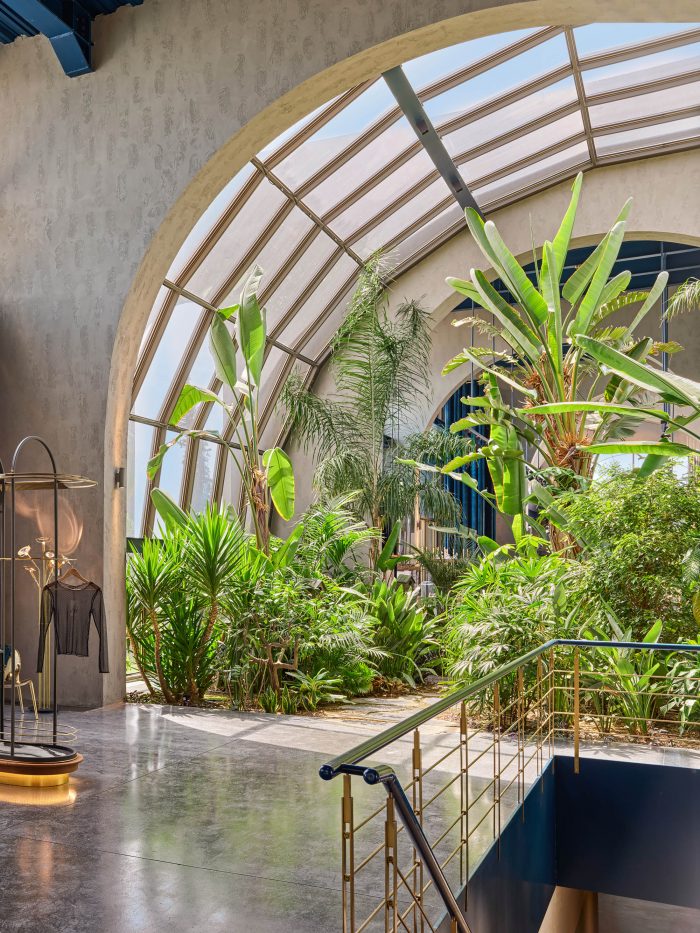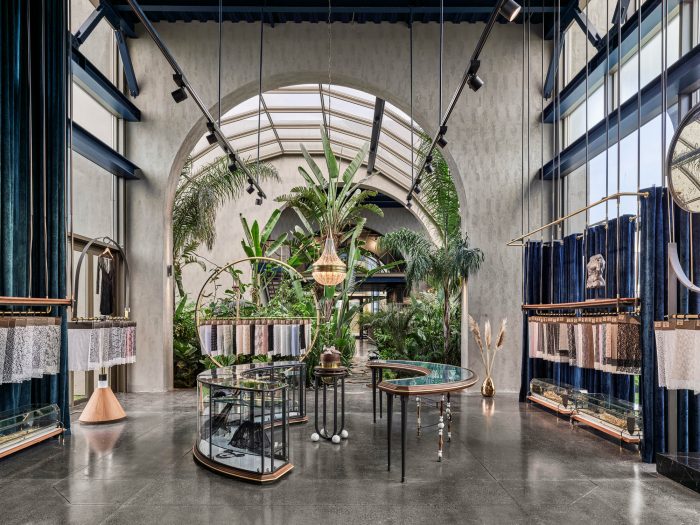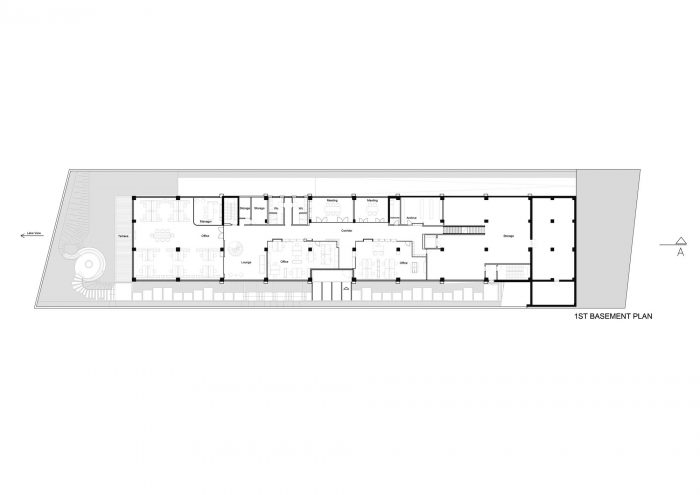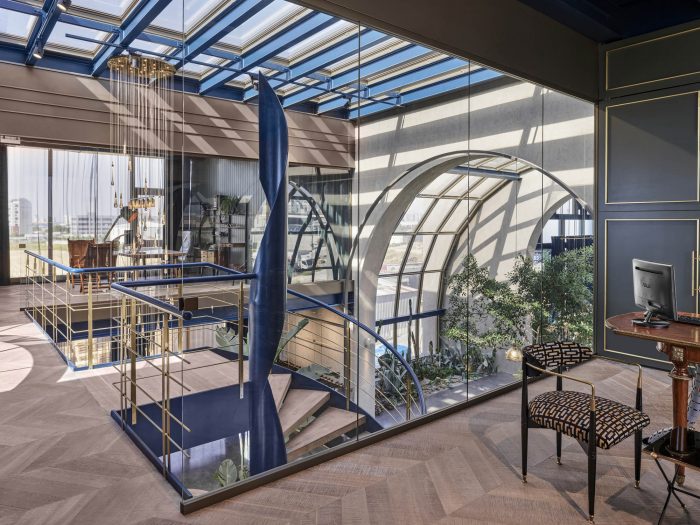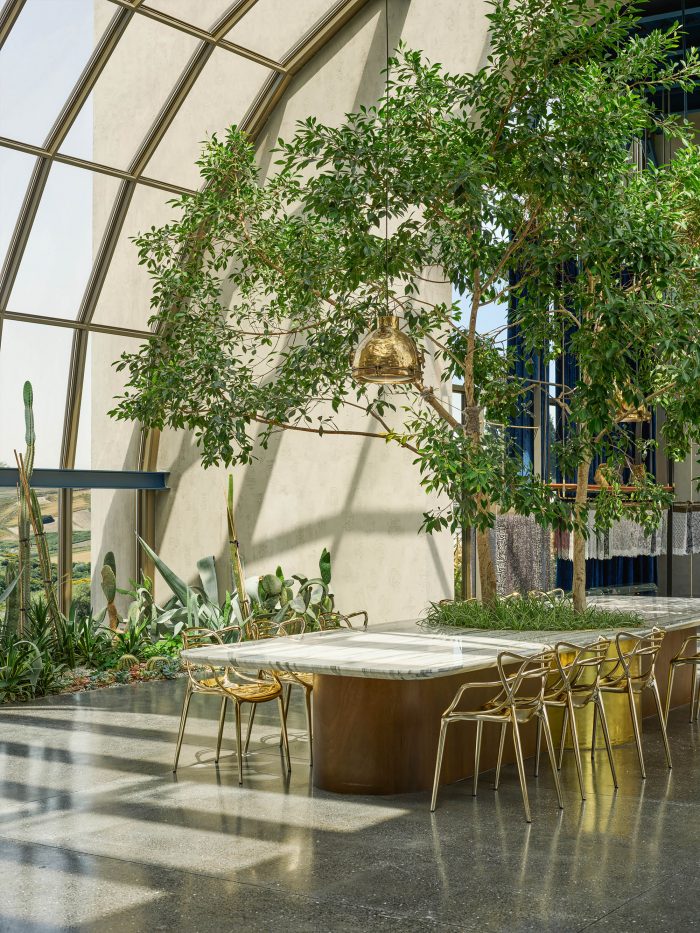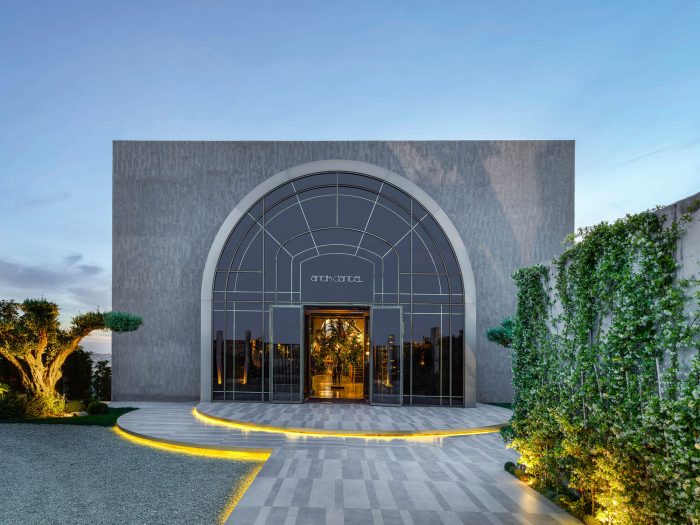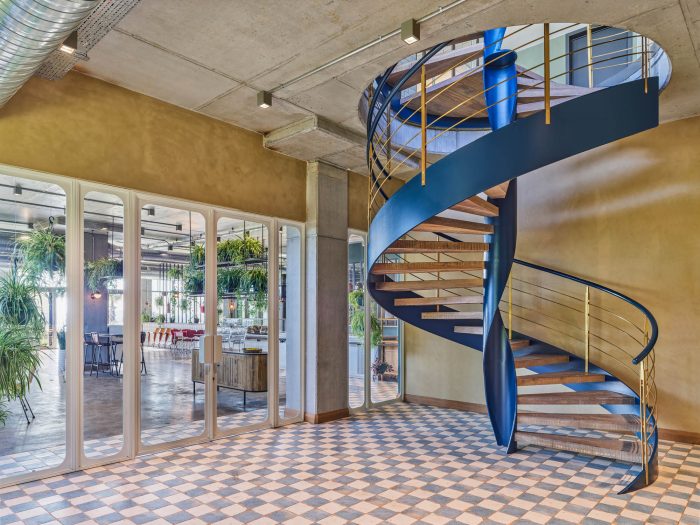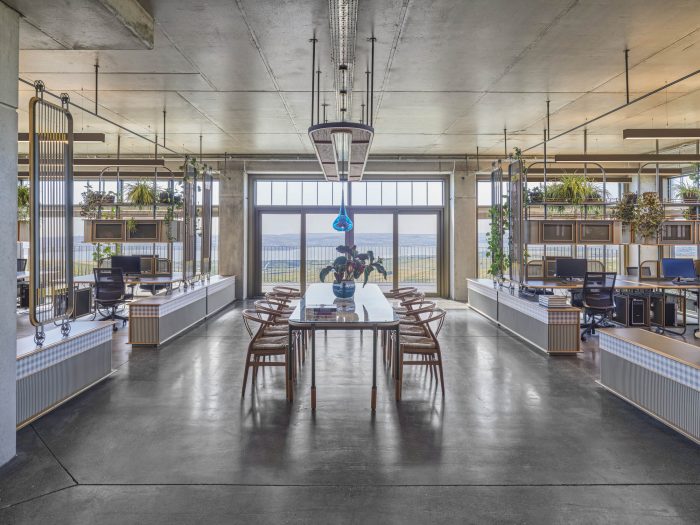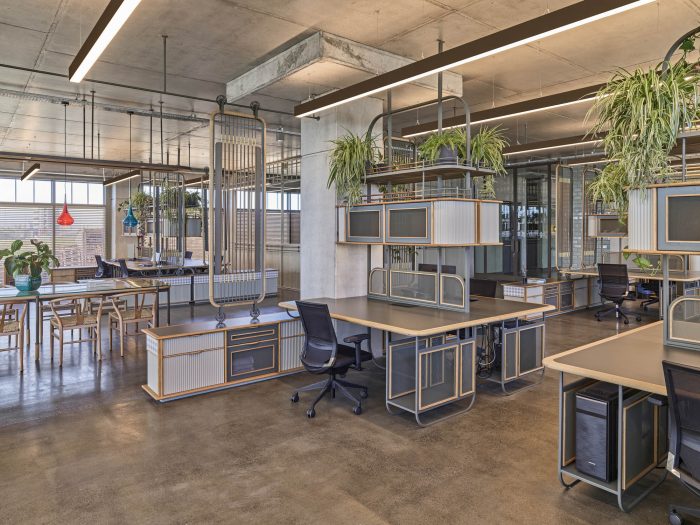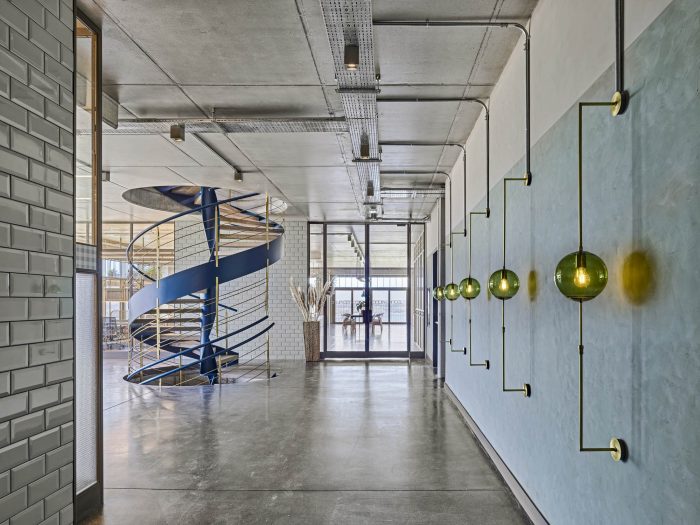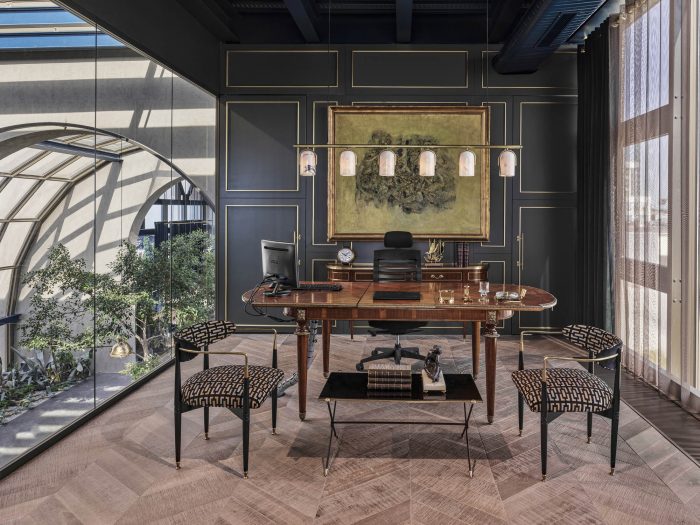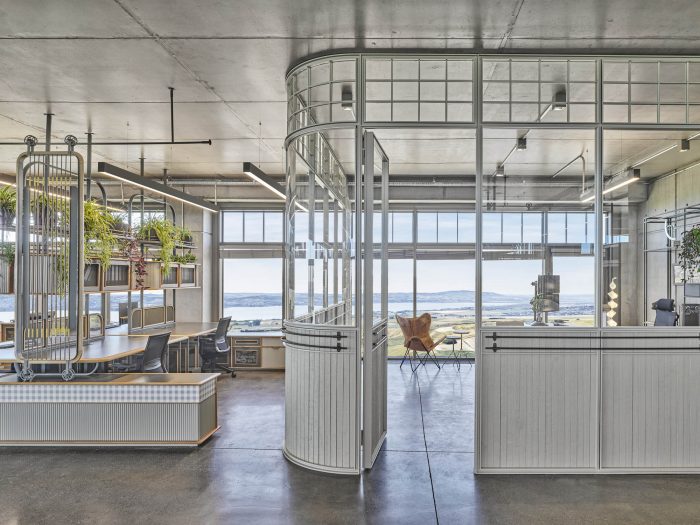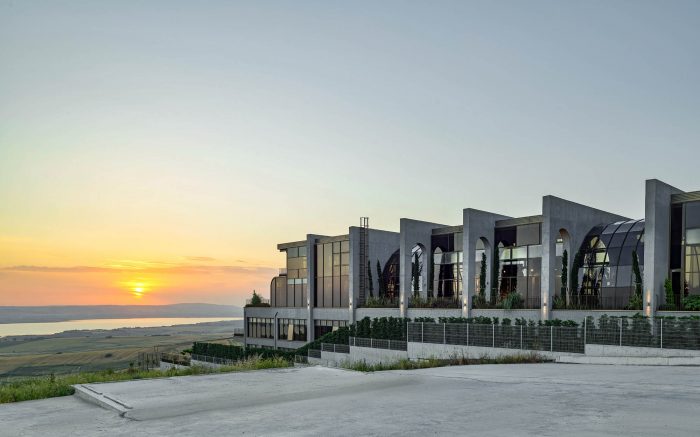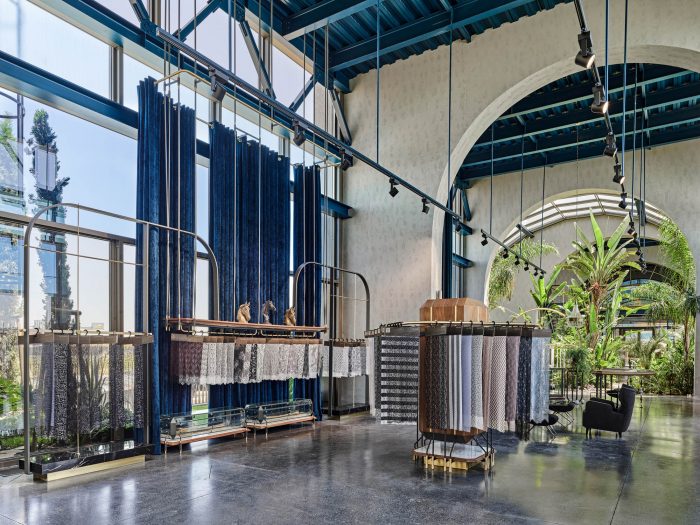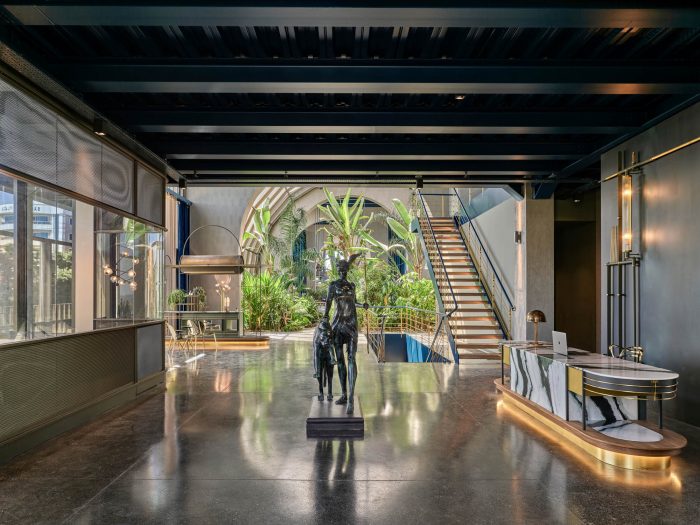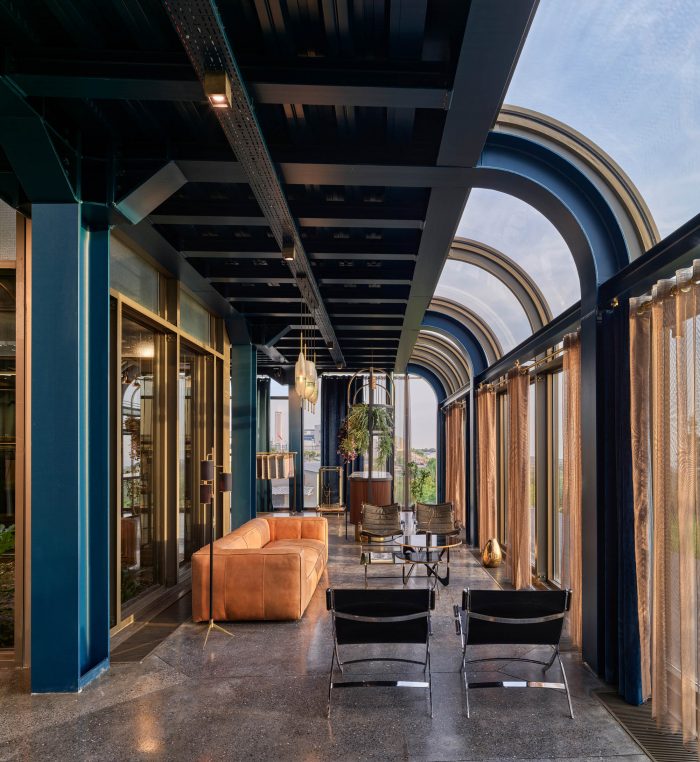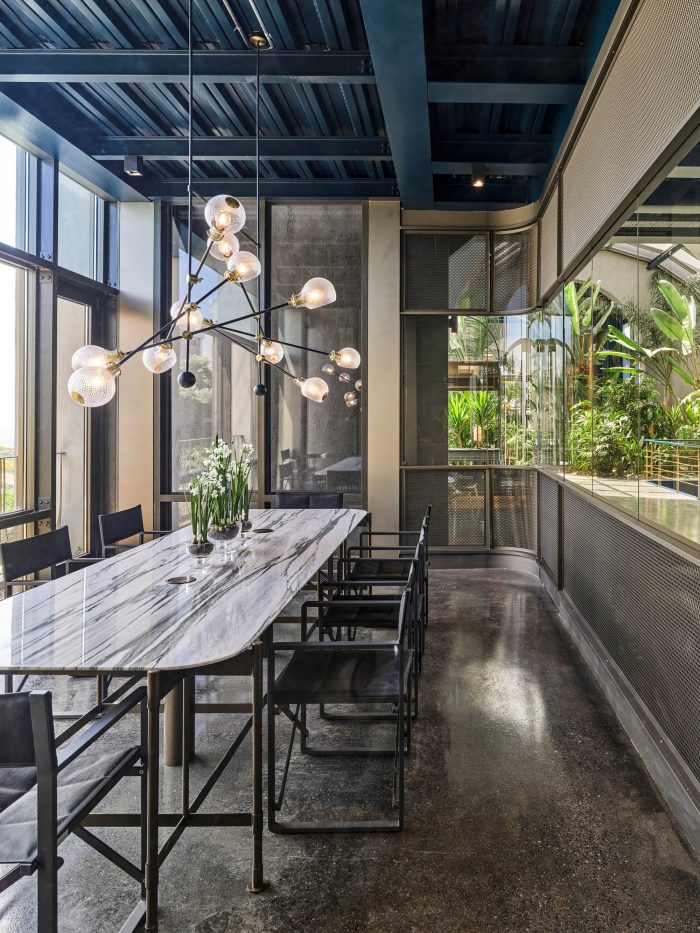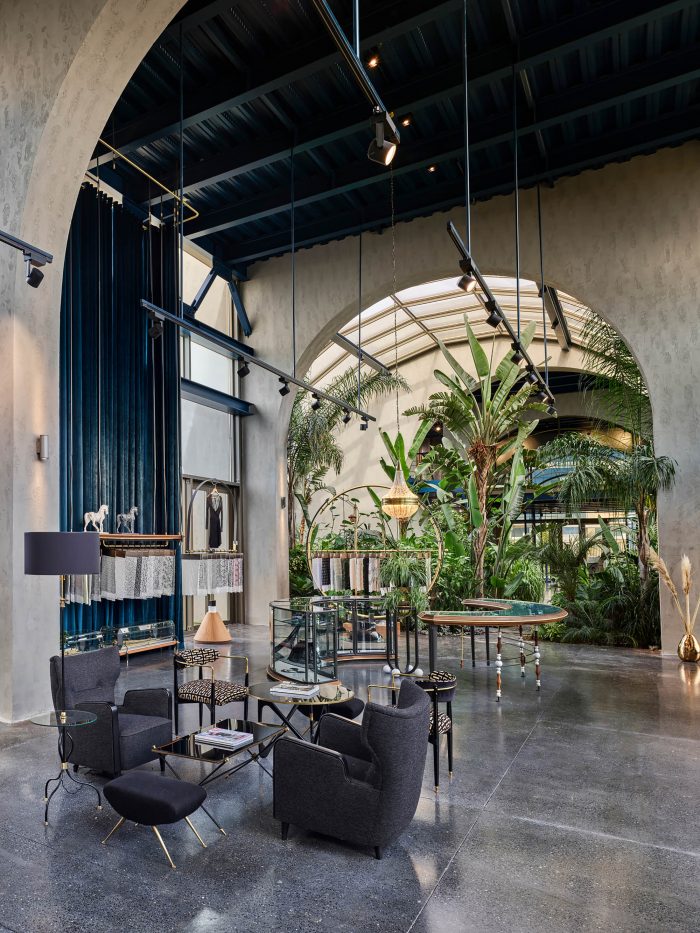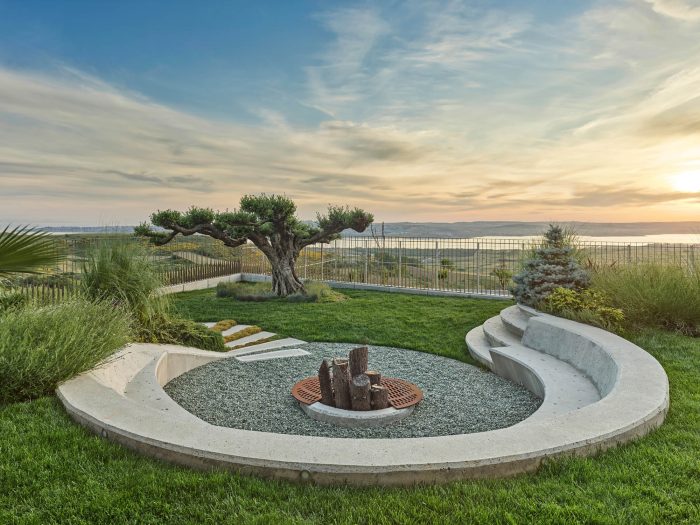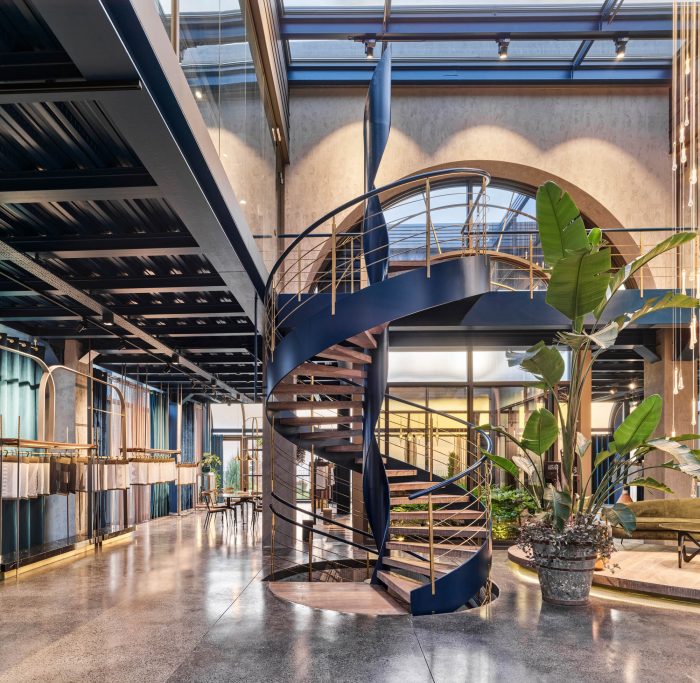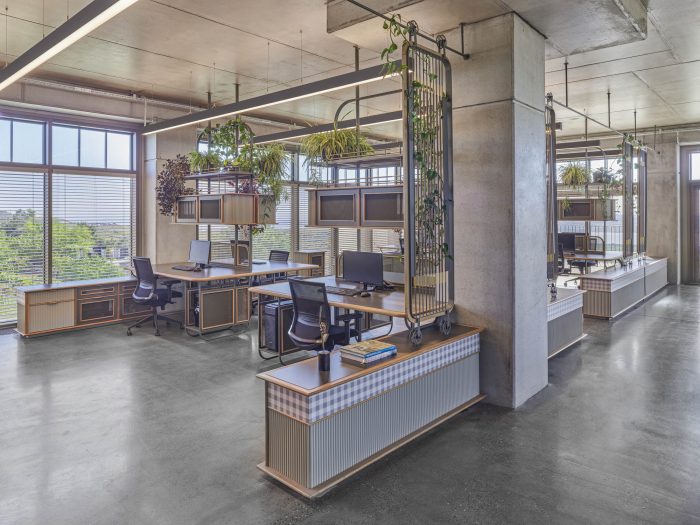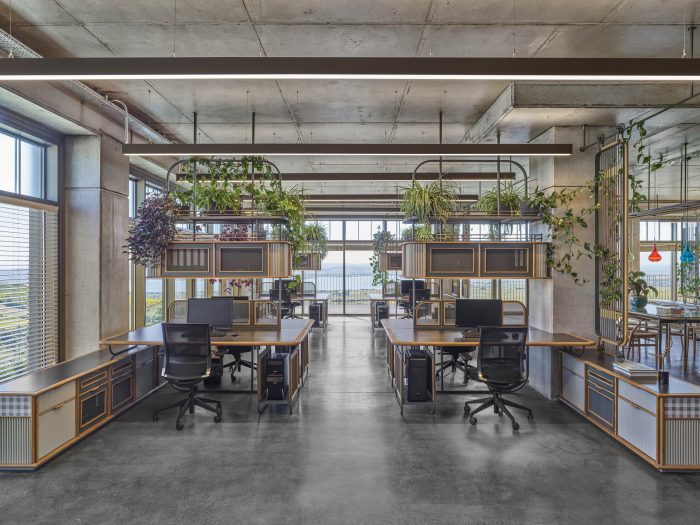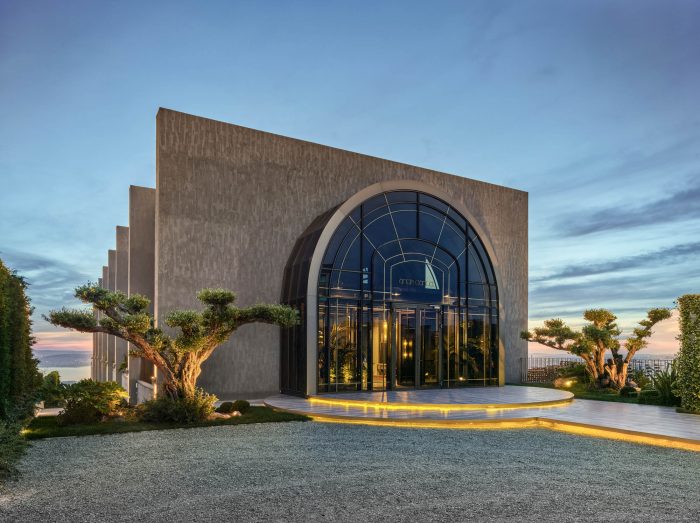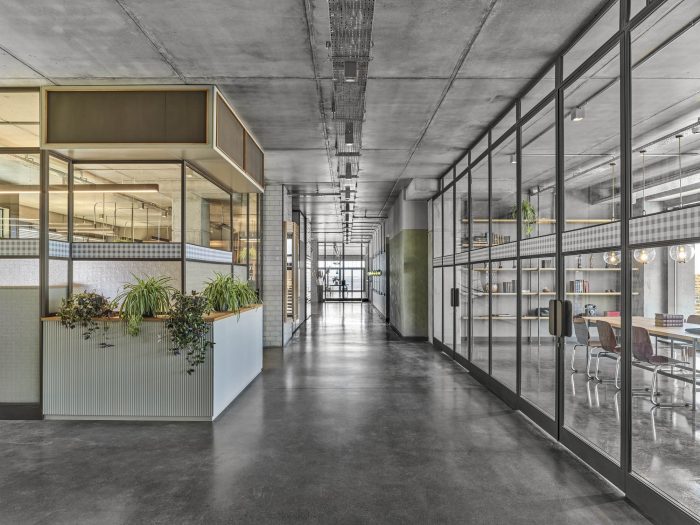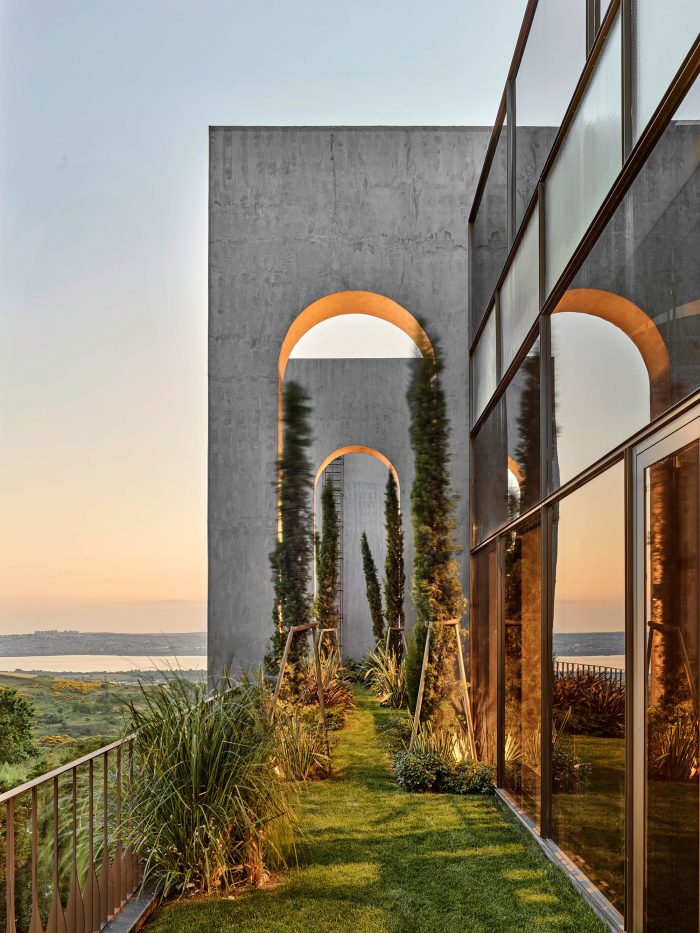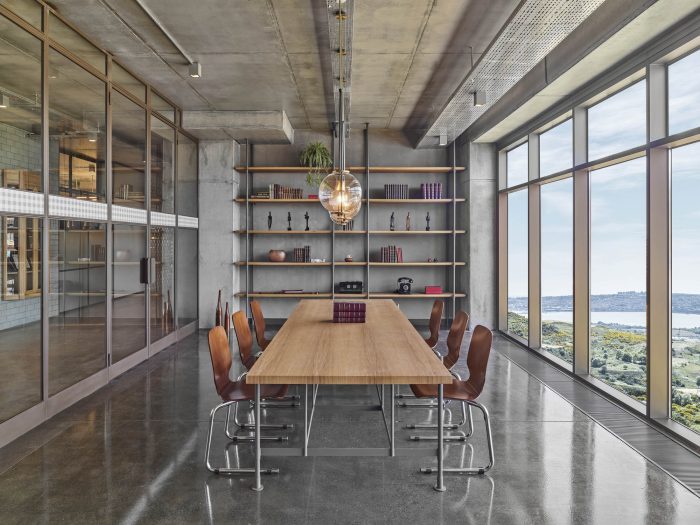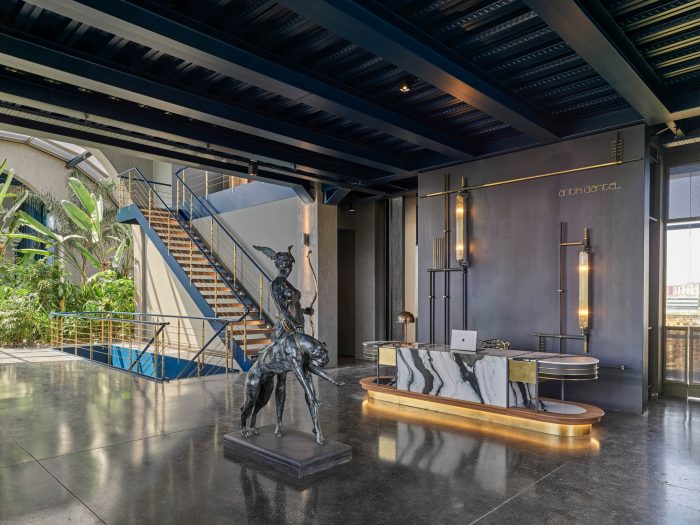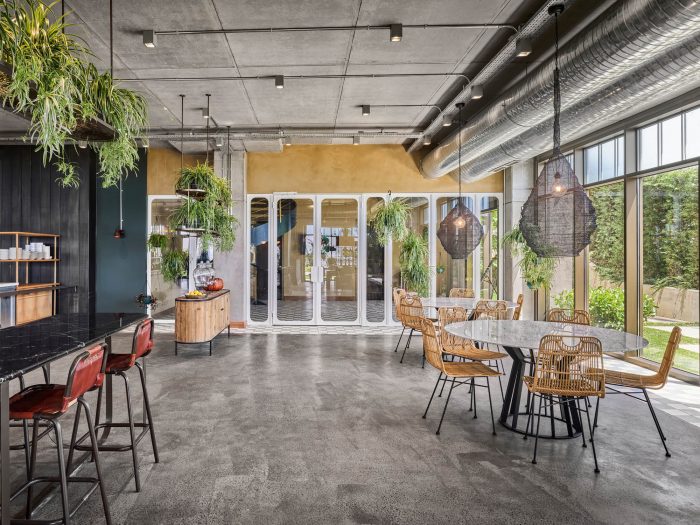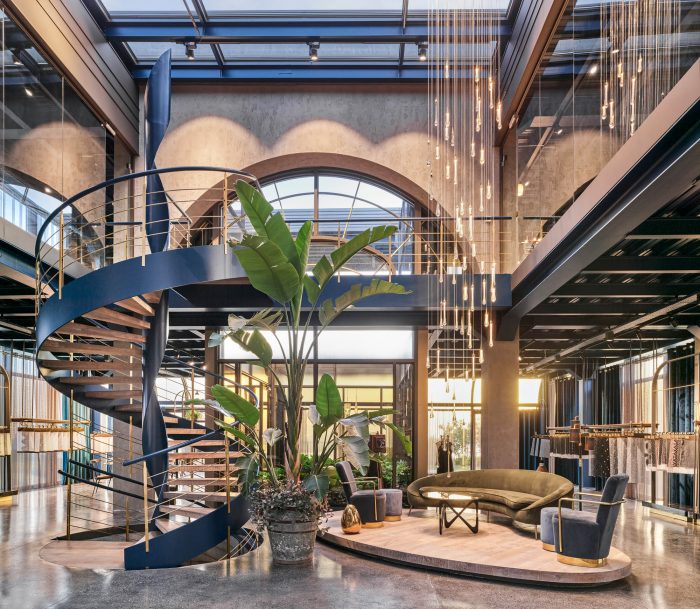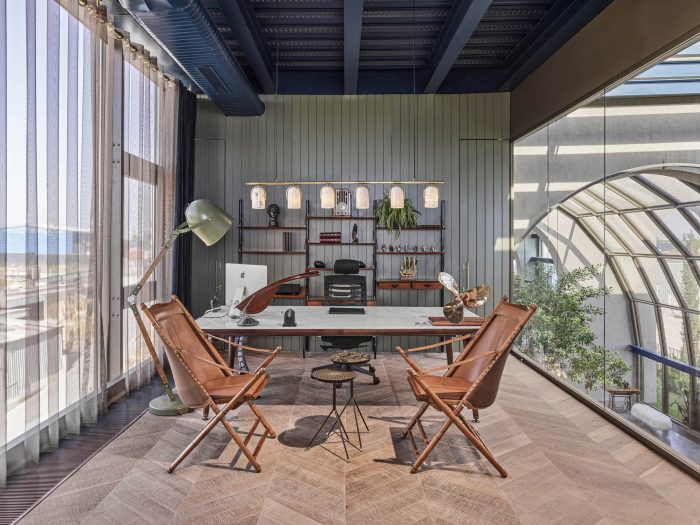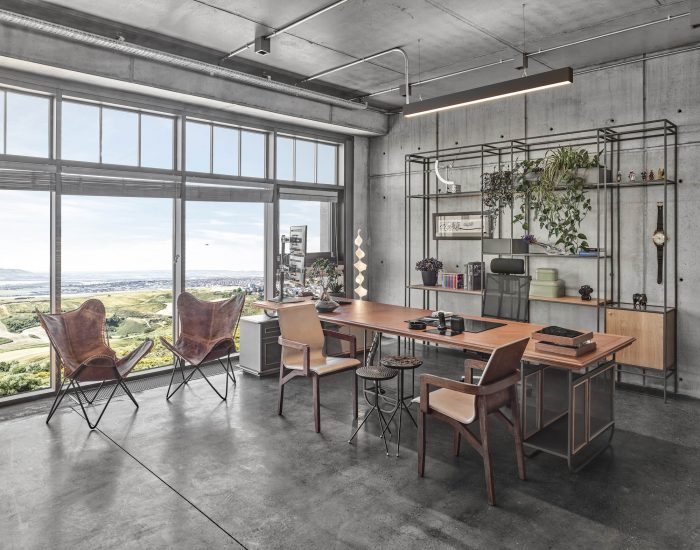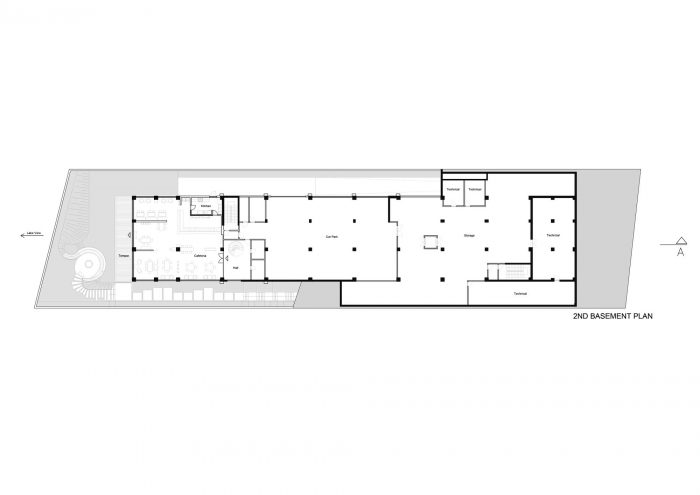该项目被设计为一家历史悠久的花边制造公司的总部。该建筑的主要功能是:展示公司生产样品的陈列室,合伙人的个人办公室,开放式的办公和会议区域,公司员工的餐厅。
The project has designed as the headquarter of a well-established lace manufacturer company. The major functions of the building are; a showroom where production samples of the company are exhibited, personal offices of the partners, open-plan office and meeting areas, dining hall for company employees.
Zemberek设计团队在早期阶段就参与了该项目,当时地下室的粗略施工正在进行中。因此,外立面和室内设计的修改和发展是为了适应现有的钢筋混凝土结构和轴线系统。由于新的设计理念和游客体验,以前设计的钢筋混凝土系统被替换成了钢结构。设计的基本目标之一是欢迎游客从建筑的入口开始,以整体和分段的流程延伸到湖边的旅程。
Zemberek Design team has been involved in the project in an early stage while rough construction of basement floors was in process. Therefore, facade and interior design revised and developed to hold to the existing reinforced concrete structure and axis system. Due to the new design concept and visitor experience, the previously designed reinforced concrete system was replaced with steel construction. One of the fundamental goals of the design was welcoming the visitors to a journey that starts from the entrance of the building and extends to the lakeside with a holistic and segmented flow.
拱门像骨干一样一个接一个地排开,将空间分成几个部分,同时也提供了一种方向感和不同视角的可能性,邀请游客进入建筑的流程。从建筑的入口处开始的初步部分欢迎客人,并以一种活生生的自然氛围包围着他们,就像玻璃穹顶下的丛林。
While the arches, lined up one after the other like a backbone, divide the space into sections, also provides a perception of direction and different perspective possibilities that invite the visitors into the flow of the building. The preliminary sections from the entrance of the building welcome the guests and surround them with a living nature atmosphere like a jungle under the glass vault.
因此,客人经过这些植物时,会到达容纳工作空间和休息室的展示厅。第二个玻璃拱顶部分将展厅一分为二,同时也提供了一个大型会议空间。最终,这段旅程以室内休息室和俯瞰湖边景色的露台结束。在展厅里,展示了花边产品,并接待了来自纺织公司的设计师,让他们检查花边的选择并进行设计。
Therefore, the guests passing by the plants, reach the showroom which accommodates the working space and lounge. The second glass vaulted section divides the showroom into two and also provides a large meeting space. Eventually, the journey finishes with an interior lounge and a terrace that overlooks the lakeside view. In the showroom, lace products are exhibited and designers from textile companies are hosted to examine the lace options and work on their designs.
在这个过程中,我们的主要目标是创造空间的替代品,让使用者既能单独工作,又能集体工作,并能呼吸和拥有。在第二条轴线上,一个继续朝同一方向的单臂楼梯,连接到主要的方向设置,将循环带到办公层。办公层的主循环轴线就像一条街道,随着平面设置的缩小和扩展,室内立面的占用和空置构成。”街道 “通过与它相连的小院子向室外开放。最后,这段旅程以向湖景开放的露台结束。
In this process, our main goal was to create space alternatives where the users could both work individually and collectively and breathe and own. A single-arm staircase that continues in the same direction, attached to the main orientation setup, on the second axle, carries the circulation to the office floor. The office floor’s main circulation axis works like a street, with the narrowing and expansion in the plan setup, the occupancy vs vacancy composition on the interior facades. “The street” opens outdoor through the small yards that are attached to it. Finally, the journey ends with the terrace opening to the lake view.
整个循环由一个不间断的体验组成,它连接了底层的展示厅和底层的餐厅,在最后一个轴线上有一个螺旋形的楼梯。语言和材料;在外墙上,复古色调的铝型材和不同色调和质地的窗玻璃是首选。在细节方面,黄铜、大理石、玻璃、木材和天鹅绒织物等材料在设计中占主导地位,形成优雅的整体性。
The whole loop consists of an uninterrupted experience, that connects this floor showroom on the ground floor and the dining hall on the lower floor with a spiral staircase on the last axis. The language and material; on the façade, aluminum profiles of vintage tones and window glasses of different shades and textures were preferred. In the details, materials such as brass, marble, glass, wood, and velvet fabric dominate the design, forming elegant integrity.
手工制作的黄铜和木头细节与公司立场中的谨慎和精确等概念相吻合。在宽阔的表面上,如地板和墙壁,相当平静,野蛮的外观是目标,混凝土和混凝土衍生的材料是首选。
The brass and wood details produced by handwork coincide with the concepts such as care and precision as in the company’s stance. On the wide surfaces such as floors and walls, rather calm, brutalist appearances were targeted, and concrete and concrete-derived materials were preferred.
Architects: Zemberek Design
Area: 6000 m²
Year: 2020
Photographs: İbrahim Özbunar
Architectural Design: Ece Ilgın Avcı, Murat Çakan, Fatma Altıntaş, Cihan Şahin, Çağla Abdu, Elif Molla
City:Istanbul
Country:Turkey

